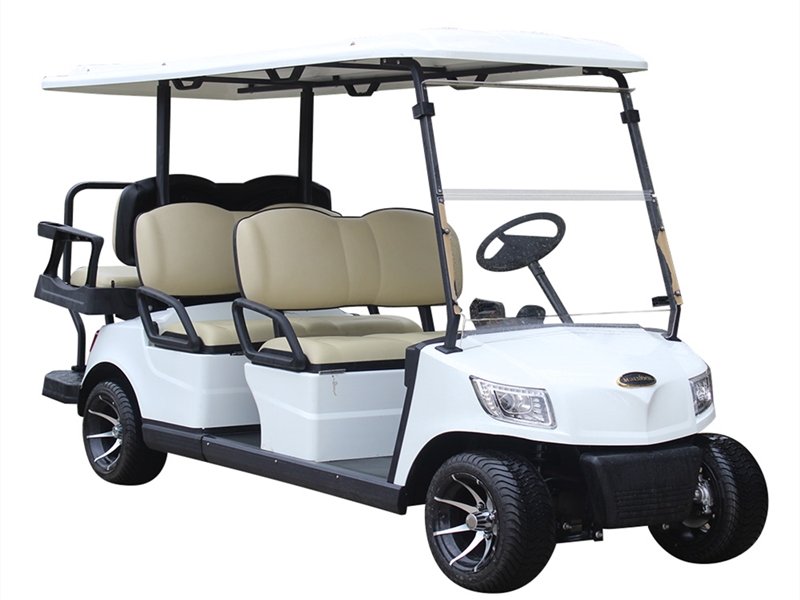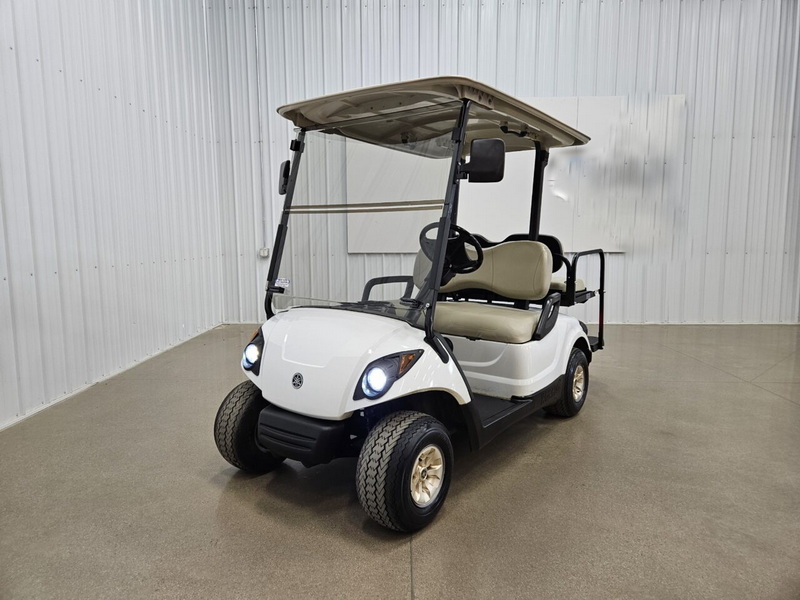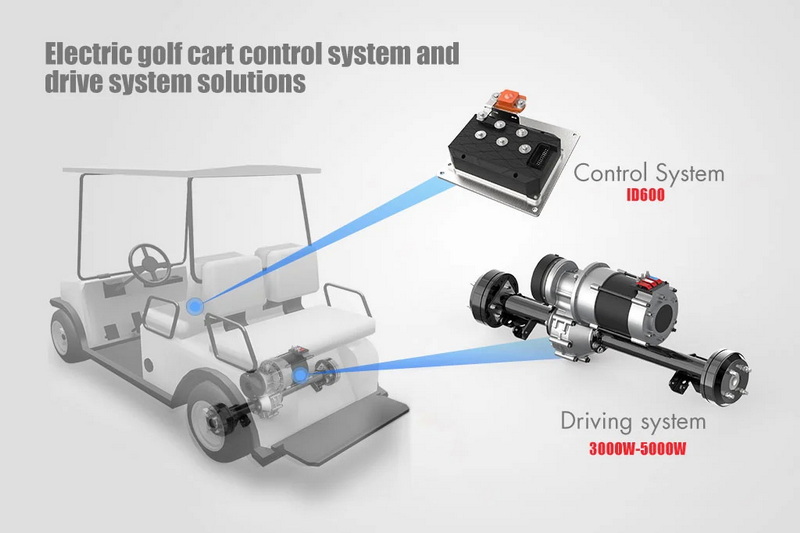Content Menu
● Understanding Electric Golf Carts
>> Types of Electric Golf Carts
● Key Components of an Electric Golf Cart
● Starting Your Electric Golf Cart
● Driving Techniques
● Navigating Different Terrains
● Safety Precautions
● Parking Your Electric Golf Cart
● Maintenance Tips for Electric Golf Carts
● Conclusion
● FAQ
>> 1. What should I do if my electric golf cart won't start?
>> 2. How often should I charge my electric golf cart?
>> 3. Can I drive my electric golf cart in rainy weather?
>> 4. Are there any age restrictions for driving a golf cart?
>> 5. How do I maintain my electric golf cart?
Driving an electric golf cart can be a fun and convenient way to navigate golf courses, parks, and other recreational areas. This guide will provide you with a comprehensive overview of how to operate an electric golf cart, ensuring that you understand the necessary steps, safety precautions, and best practices for a smooth ride.

Understanding Electric Golf Carts
Electric golf carts are small, battery-powered vehicles designed primarily for transporting golfers and their equipment around the course. Unlike traditional gas-powered carts, electric models are quieter and more environmentally friendly. They are powered by rechargeable batteries that provide the necessary energy to run the electric motor.
Types of Electric Golf Carts
Electric golf carts come in various types, catering to different needs:
- Standard Golf Carts: Typically used on golf courses for transporting players and clubs.
- Utility Carts: Designed for carrying heavier loads, such as equipment or supplies, often used in maintenance roles.
- Personal Transportation Vehicles (PTVs): These are street-legal carts that can be used on roads and in neighborhoods.
- Custom Carts: Many owners customize their carts with added features like enhanced seating, storage compartments, and upgraded batteries.
Key Components of an Electric Golf Cart
Before driving an electric golf cart, it's essential to familiarize yourself with its key components:
- Batteries: The heart of the electric cart, usually consisting of lead-acid cells that store energy. Lithium-ion batteries are also becoming popular due to their longer lifespan and lighter weight.
- Motor: Converts electrical energy from the batteries into mechanical energy to drive the wheels. The motor's power rating can vary, affecting speed and torque.
- Controller: Manages the power flow from the batteries to the motor based on accelerator input. It ensures smooth acceleration and deceleration.
- Throttle: The pedal used to control speed. Unlike gas-powered vehicles, electric carts use a simple pedal for acceleration without a clutch.
- Brake: The pedal used to slow down or stop the cart. Many electric carts feature regenerative braking systems that recharge the batteries when slowing down.
Starting Your Electric Golf Cart
1. Safety First: Ensure all passengers are seated and wearing seatbelts. Familiarize yourself with the controls before starting.
2. Check Battery Level: Make sure the batteries are charged. A fully charged battery will ensure optimal performance.
3. Insert Key: Place the key in the ignition and turn it to the "ON" position.
4. Engage Drive Mode: Locate the "Forward/Reverse" switch (usually found on the dashboard) and set it to "Forward" for driving or "Reverse" for backing up.
5. Release Parking Brake: If your cart has a parking brake, ensure it is disengaged before proceeding.
6. Accelerate Gently: Press down on the accelerator pedal slowly to start moving forward. Electric carts can accelerate quickly, so be cautious.

Driving Techniques
Driving an electric golf cart is similar to driving a car but requires attention to specific details:
- Accelerating: Gradually press down on the right pedal (accelerator) to increase speed. Avoid sudden acceleration as it may cause loss of control.
- Braking: To stop, remove your foot from the accelerator and gently press down on the brake pedal located on the left side. Electric carts may require more pressure than conventional vehicles to stop effectively.
- Steering: Use the steering wheel to navigate turns. Make gradual turns rather than sharp ones to maintain stability and avoid tipping over.
- Speed Control: Always drive at a safe speed, especially when navigating turns or downhill slopes. Many courses have speed limits—typically around 15 mph—to ensure safety for all users.
Navigating Different Terrains
Electric golf carts are versatile vehicles that can handle various terrains:
- Flat Surfaces: Ideal for standard driving conditions on golf courses or paved paths; maintain a steady speed and be aware of other players.
- Hills and Inclines: When driving uphill, apply gradual pressure on the accelerator while maintaining a steady pace. For downhill slopes, ease off the accelerator and use brakes gently to control speed without skidding.
- Uneven Terrain: Be cautious when driving over bumps or rough patches; slow down to prevent jolting passengers or damaging the cart.
Safety Precautions
Safety is paramount when operating an electric golf cart:
- Stay Aware of Surroundings: Keep an eye out for pedestrians, other golfers, and obstacles in your path. Use mirrors if available for better visibility.
- Keep Arms and Legs Inside: Ensure that all passengers keep their limbs inside the cart at all times while moving to prevent accidents.
- Avoid Overloading: Adhere to weight limits specified by the manufacturer (usually around 800 pounds). Overloading can affect performance and safety.
- Watch for Slippery Surfaces: Be cautious when driving on wet or uneven terrain as it may increase the risk of tipping over or losing traction.
- Use Turn Signals (if available): Indicate your intentions when turning or stopping to alert other drivers and pedestrians about your movements.
Parking Your Electric Golf Cart
When you're done driving:
1. Bring Cart to a Complete Stop: Ensure that you come to a full stop before shifting gears from Forward to Reverse or vice versa.
2. Engage Parking Brake: Always set the parking brake when you park your cart; this prevents it from rolling away on slopes or uneven surfaces.
3. Turn Off Ignition: Remove the key from the ignition to prevent accidental starts while parked; this is especially important in public areas where unauthorized use could occur.
4. Check Surroundings Before Exiting: Ensure that no one is approaching before allowing passengers to exit; this minimizes risks of accidents while disembarking.

Maintenance Tips for Electric Golf Carts
Regular maintenance is crucial for ensuring optimal performance and longevity of your electric golf cart:
Battery Care:
- Regularly check battery water levels (for lead-acid batteries) and ensure they are topped off with distilled water.
- Clean battery terminals periodically to prevent corrosion.
- Charge batteries after each use and avoid letting them discharge completely as this can shorten their lifespan.
Tire Maintenance:
- Check tire pressure regularly; under-inflated tires can lead to poor handling.
- Inspect tires for wear and replace them as needed.
Electrical System Checks:
- Periodically inspect wiring connections for wear or damage.
- Ensure that all lights (if equipped) are functioning properly.
General Cleaning:
- Clean your cart regularly using mild soap and water; avoid harsh chemicals that could damage surfaces.
- Waxing your cart occasionally can help protect its finish from UV rays and environmental damage.
Professional Servicing:
- Schedule regular check-ups with a qualified technician who specializes in electric vehicles; they can provide insights into any potential issues before they become serious problems.
Conclusion
Driving an electric golf cart is straightforward once you understand its components and follow safety protocols. By adhering to these guidelines, you can enjoy a safe and pleasant experience while navigating various terrains with ease. Whether you're playing a round of golf or simply enjoying time outdoors with family and friends, mastering how to drive an electric golf cart enhances your experience significantly.

FAQ
1. What should I do if my electric golf cart won't start?
If your electric golf cart won't start, check if the battery is charged, ensure that all connections are secure, and verify that the key is turned on properly. If issues persist, consult a professional technician for assistance.
2. How often should I charge my electric golf cart?
You should charge your electric golf cart after each use or whenever the battery level is low (typically below 30%). Regular charging helps maintain battery health and longevity.
3. Can I drive my electric golf cart in rainy weather?
While many electric golf carts are designed for outdoor use, it's best to avoid driving them in heavy rain or standing water as this can damage electrical components and pose safety risks.
4. Are there any age restrictions for driving a golf cart?
Age restrictions vary by location; some areas may require drivers to be at least 16 years old with a valid driver's license while others may have different regulations. Always check local laws before operating a golf cart.
5. How do I maintain my electric golf cart?
Regular maintenance includes checking battery levels, cleaning connections, inspecting tires for proper inflation, and ensuring brakes are functioning correctly. Follow your manufacturer's maintenance schedule for best results.











































